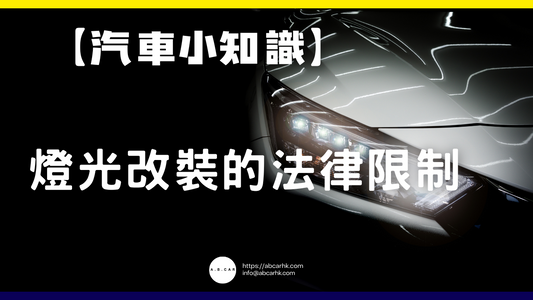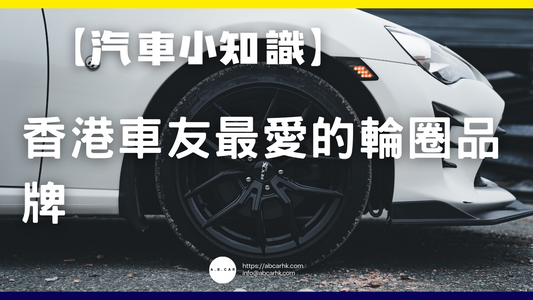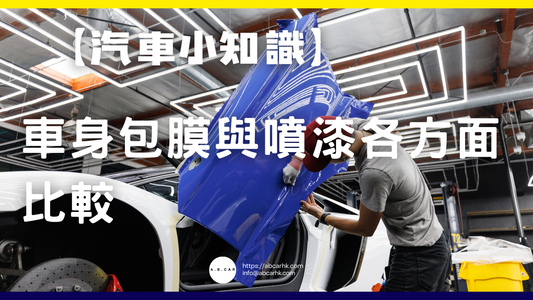[Car Tips] Why is the driver's seat on the right in Hong Kong? The reason revealed!

Ever since I got my license plate, I've wondered why Hong Kong drivers sit on the right. Today, let's find out why.
Did you know? Why is the driver's seat on the right in Hong Kong? The reason revealed!
In Hong Kong, you'll likely notice that cars often have their driver's seat on the right, a stark contrast to the "left-hand drive" system found in mainland China and most European and American countries. How did this come about? What are the historical origins and practical considerations behind this? Let's unravel the mystery of "right-hand drive"!
1. What is right-hand drive?
"Right-hand drive" refers to a car with the driver's seat on the right side and traffic on the left (also known as "left-hand drive"). Conversely, "left-hand drive" refers to a car with the driver's seat on the left side and traffic on the right ("right-hand drive"). Hong Kong, Macau, the United Kingdom, Japan, Australia, and India are considered "right-hand drive" regions, while mainland China, the United States, Germany, and France are considered "left-hand drive" regions.
2. The Historical Origin of "Right-Hand Driving"
1. Influence of the British colonial period
Hong Kong became a British colony after the Opium War in 1842, a period spanning over 150 years. Britain itself is a "right-hand drive, left-hand traffic" country , so Hong Kong adheres to British standards for road design, traffic regulations, and vehicle import standards. This traffic tradition, dating back to colonial times, continues to this day.
2. The origins of "driving on the left" in the UK
Why does Britain drive on the left? The origins of this rule can be traced back to the Middle Ages, when European knights wielded their swords in their right hands and walked on the left, ready for immediate defense. As horse-drawn carriages became increasingly common, this custom carried over into the era of horse-drawn carriages and automobiles, ultimately becoming a legal rule of traffic in Britain. Britain brought this system to its colonies, including Hong Kong, India, Australia, and South Africa, establishing the global distribution of right-hand drive.
3. International Development after World War II
After the Second World War, most former British colonies (such as Singapore, Malaysia, Australia, and South Africa) retained their "drive on the right, drive on the left" traffic system. Although Hong Kong returned to Chinese rule in 1997, the original system remained unchanged, maintaining right-hand drive for the sake of continuity in transportation and daily life.
III. Practical Considerations and Legal Provisions
1. Existing infrastructure and road design
Hong Kong's road layout, signs, traffic lights, and dividers are all designed for driving on the left, making changing the system extremely costly. Tunnel entrances and exits, flyovers, intersections, and bus stops are all designed for right-hand drive vehicles.
2. Vehicle import and legal regulations
According to Hong Kong Transport Department regulations, all vehicles operating in Hong Kong must be right-hand drive . Left-hand drive vehicles are generally not permitted on Hong Kong roads (except in very limited circumstances, such as for specific exhibitions and diplomatic vehicles). This not only ensures smooth traffic flow but also reduces safety hazards caused by incompatible driver's seat designs.
3. Coordination with neighboring regions
Hong Kong, like Macau, retains right-hand drive, while mainland China is left-hand. To facilitate cross-border travel, the Hong Kong-Zhuhai-Macao Bridge features dedicated traffic switching facilities ("switch islands"), allowing vehicles to switch lanes before entering the other area, ensuring safety. This is a key practical reason for Hong Kong to maintain right-hand drive.
IV. The Impact of Right-Hand Drive on the Automotive Market and Daily Life
1. Car model selection
Hong Kong primarily imports right-hand drive models from the UK, Japan, and Australia. Manufacturers in these regions produce models specifically for the right-hand drive market. Some European and American brands require special ordering of right-hand drive versions, otherwise they cannot be sold in Hong Kong.
2. Cross-border driving arrangements
Hong Kong residents must drive to mainland China in left-hand drive vehicles. Some cross-border drivers own two cars in mainland China and Hong Kong, or apply for special cross-border license plates, which has a certain impact on daily life and business operations.
3. Driving training and testing
Hong Kong's driving schools and exams are all based on right-hand drive, a stark contrast to left-hand drive in other parts of the world. This can be quite frustrating for Hong Kong residents driving in foreign countries (such as the US or Europe), and vice versa.
5. Global Distribution of Right-Hand Drive and Left-Hand Drive Vehicles
Currently, about 35% of countries in the world adopt the "drive on the right and drive on the left" policy , including the United Kingdom, Japan, Hong Kong, Australia, India, South Africa, Thailand, Malaysia, Singapore, etc.; the remaining 65% of countries adopt the "drive on the left and drive on the right" policy, such as mainland China, the United States, and most European countries.
6. Will Hong Kong switch to left-hand drive in the future?
Although economic and transportation exchanges between Hong Kong and mainland China are becoming increasingly frequent, from a practical and technical perspective, it is almost impossible for Hong Kong to switch to "left-hand drive" in the short term. The reasons include:
- Road design and engineering changes are costly
- Hundreds of thousands of right-hand drive vehicles in Hong Kong need to be replaced
- Citizens' driving habits and traffic regulations need to be completely rewritten
- Difficulty coordinating external traffic (such as with Macau, the United Kingdom, etc.)
Therefore, the "drive on the right, drive on the left" system is expected to be maintained for a long time.
VII. Conclusion: History and Culture in Details
Hong Kong's "right-hand drive" policy is not just a technological choice; it's the product of multiple factors, including history, culture, law, and everyday life. This seemingly simple vehicle design holds a rich tapestry of colonial history, international traffic regulations, and modern urban planning. The next time you see a right-hand drive car in Hong Kong, consider the story behind it!



